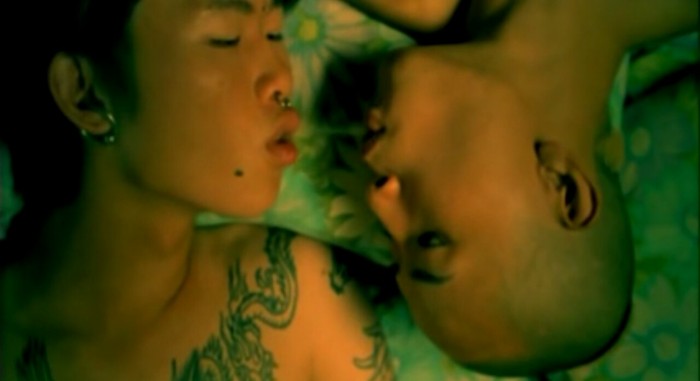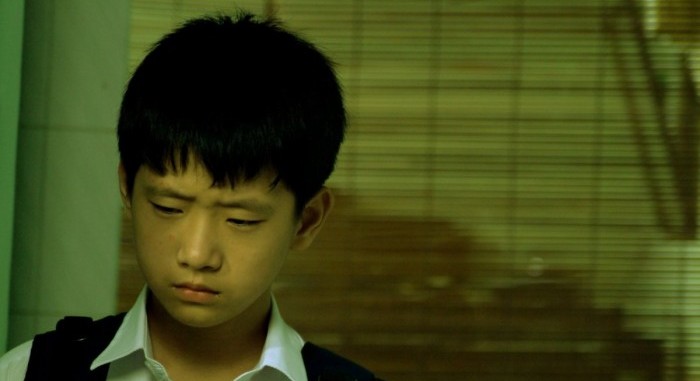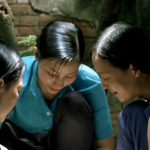By Leni De Castro
When we think of Singapore, we see images of a clean city state with an almost zero crime rate and a prosperous economy. But there is another side of Singapore…a darker side which can be seen through the eyes of Royston Tan. He has a unique brand of social realism that fellow auteurs and film critics applaud. His films have captured such attention that he has earned international recognition and even funding.
His family’s impoverished background and misfortunes have been the inspiration for many of his stories. Royston Tan came from a close knit family who had to undergo trials that would break other families apart. Instead, the adversities they encountered drew them closer together. His stories, however, are rather contrastive tales about fragmented families, teen rebellion and gang-related activities, and strife brought on essentially by poverty. His films – particularly 2000’s Sons, a film funded by $3,000 of his own savings – present social realism in surprisingly unpredictable ways. His subjects are mostly the disadvantaged and marginalized members of the Singapore society. In focus are three of his films with social issue themes presented in varied styles.
1. 15: The Movie (2003)
This is Royston Tan making a collage, literally, about troubled teens rebelling against institutions, families and themselves. It is synopsised by the bow and arrow scene of the introduction, and it goes on to magnify the feelings, insights and thoughts of the Singaporean youth belonging to the group of underachievers who find the school system limiting. The seriousness of the sub-themes are lightened up by segues of rapping and performances by the young actors who happen to be real life reformed gang members. The film presents these boys’ contrasting characteristics of toughness and vulnerability. Most of these people are in the crossroads of their lives and, although they pose tough exteriors, they are as vulnerable and fragile as any other who is struggling with himself.
Harrowing issues such as drugs, teen suicide and gang-related violence stand in the spotlight. In contrast to the serious tone of the story, however, Tan injects camaraderie, loyalty and youthful playfulness to lighten up what is a rather heavy subject. This is one of Royston Tan’s best works so far, hitting viewers’ hearts at the very core.
2. 881 (2007)
In this musical homage to the Getai tradition, Tan utilises the musical tapestry to convey his message about following one’s dreams, and the importance of family and friends in achieving them. The Getai tradition in Singapore is a Chinese practice during the Ghost month (7th month of the year). Supposedly this is to appease the spirits in this solemn occasion with Chinese operas and puppet shows, though this has been replaced with livelier music and dance performances in the Hokkien dialect.
The story is centred on singing duo the Papaya Sisters, who aim to gain popularity in the Getai scene. Suffering from family rejection and illness, the duo’s determination to sing onstage is inspiring. These hardships serve as a reflection of Tan’s struggles in filmmaking, from his family’s misfortunes and early grappling with hindrances to his achieving of academic excellence. Moreover, the film conveys the importance of support from family and friends, while acting as a tribute to the Chinese tradition of stage performances for the masses – made Broadway-style to conform to modern times.
3. 4:30 (2005)
The deeply moving 4:30 is about a boy who is left to his own devices whilst experiencing loneliness at a very young age due to absentee parenting. One of Royston Tan’s most serious works, the film shows the reflective insight of the auteur into loneliness in comparative stages: as a young boy and as a grown man. 4:30‘s story is centred on the daily activities of a young boy who wakes up at 4:30 in the morning to investigate, scrutinise and satisfy his curiosities regarding a Korean tenant. With his curiosity stemming from the lack of a father figure, he adopts the man (in his mind) to become his (secret) dad, a desire touchingly reflected in his school work.
The tenant, his assigned father figure, also struggles with loneliness, suicidal tendencies, alcoholism and heavy smoking. Thus, it revolves around the two lonely people living under the same roof of one apartment building. The film is infectiously melancholic, dealing with absentee parenting, vices for coping with loneliness and the deep yearning for companionship. Its themes may resonate universally amongst people living in developed countries, though Singapore’s Chinese community are known for their close knit family ties. The film explores the instances when family fragmentation happens due to work, separation and divorces. Unfortunately, the individuals who suffer the most are the children.
Royston Tan’s insightful films about the darker side of Singapore reflect its people’s innermost struggles as they live day by day in this wealthy city state. His honest views and brand of realism have pushed the boundaries of filmmaking to the next level, using a creative style which is uniquely his.










